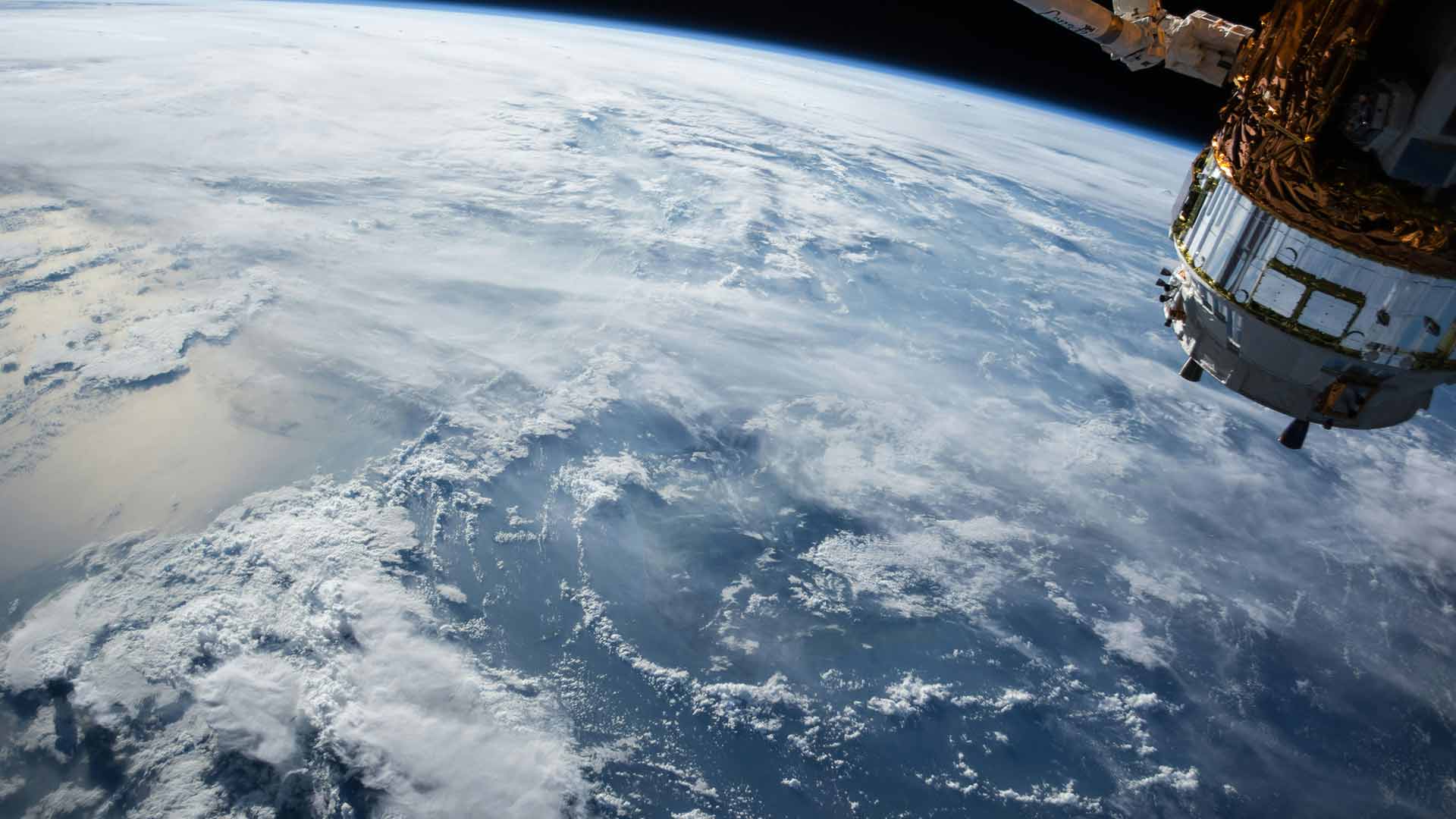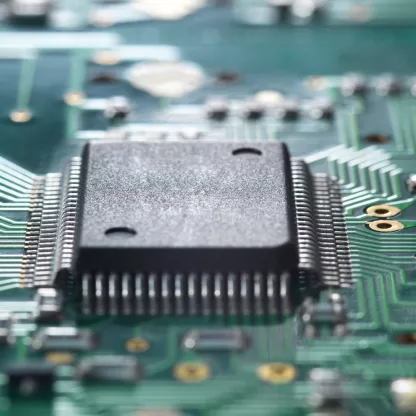Bingeing on Apple TV’s counterfactual space race saga For All Mankind, senior multi-asset investment specialist Craig Brown is reminded of the technological advances that come from defence industries.

New frontiers
I have a good couple of hours of train time on my days in the office, so finding a good show to watch is paramount for making the most of that much needed decompression time ahead of getting into Dad mode! As I pulled into my home station last week after a long day in the office the final credits rolled on the final episode of an Apple TV show that I had been binge-watching over the last few weeks.
For All Mankind was the show. It’s a fantastic foray into an alternative history of the second half of the 20th century and the space programme that featured heavily in it, and how it all played out from those days of the first moon-landings in the 1960s. No spoilers here so fear not, but essentially the show begins with the Soviet Union winning the race to the moon rather than the American Apollo 11 team of Neil Armstrong, Buzz Aldrin, and Michael Collins. This results in the space race hotting up as continued one-upmanship drives both nations, and eventually others, to continue advances into the great void beyond our planet.
As this escalating race continues, geopolitical tensions heat up, and technological breakthroughs on planet Earth come thicker and faster than they did in real life. Driven by advances made to reach further into space than rival nations, new discoveries and giant steps are made in many areas, including communications, transportation and energy.
As those credits rolled on the finale I began to consider that while the real world we all live in turned out differently, some of those concepts still ring true – in particular geopolitical stresses between East and West persisting and ebbing and flowing, just not out in space.
Sadly, in the last couple of years those geopolitical stresses have escalated around the world, with the Russian invasion of Ukraine, tensions between the US and China, and the conflicts in the Middle East. Rising geopolitical tension normally encourages investors to pay more attention to defence stocks as expectations for military spending increase. We’ve long owned some defence exposure in our core multi-asset portfolios to mitigate risks of a more stressed geopolitical age.
However, as we discussed in our podcast, The Sharpe End, a couple of recent catalysts have driven us to increase our position in such stocks. We think there are a few additional tailwinds which could drive long-term returns in the years ahead.
Trump 2.0: Shaking up NATO
The first of those catalysts is the potential for Donald Trump to win the US election in November, giving him a second term in office.
If you cast your minds back to his first term, one of his many barbs was aimed at NATO countries who weren’t spending the agreed 2% of GDP on defence. Trump felt that the US shouldn’t be relied upon to do all the spending for those other NATO nations and that they needed to start pulling their weight. We didn’t think he was going to change his tune on that one, and indeed with some recent comments he absolutely has not. With Trump driving that agenda with NATO again, there would be pressure to increase military spending – across Europe in particular. And given that nations, where possible, typically buy their defence equipment from companies close to home, we expect the lion’s share of any spending there to be focused on European manufacturers. With this in mind, we recently broadened our defence sector exposure by adding a new position in Thales, the French defence and aerospace company.
Catalyst number two is the changing shape and needs of militaries across the globe to address the issues of today, whether they be outright conflicts, or even weather and climate-related. Years ago, military might was defined largely by numbers of tanks, troops, and aircraft carriers. While these factors remain relevant today, there are other areas of focus now, whether that’s the availability and quality of high-tech equipment, or indeed the fronts which have opened up in the avenues of cyber security and digital warfare.
These new frontiers require new solutions, and while large defence contractors are known for the big machines they have produced in the past, a much more meaningful part of their business is now focused on cybersecurity and cutting-edge digital technologies. Both companies we own in this sector, Thales and US-listed Lockheed Martin, have a comprehensive suite of cyber capabilities, supported by elements of artificial intelligence, machine learning, and automation to deal with the complexities of today’s requirements. Like in For All Mankind, these technologies also have civil uses, beyond the military ones that drive their creation. For example, Lockheed Martin is using its AI capabilities and hardware to support firefighters dealing with wildfires by connecting land, air, and space-based sensor and monitoring technologies, which help predict and mitigate the spread of wildfires.
Out of this world
Our society hasn’t pushed into new frontiers of space exploration like those fictional space agencies of the Apple TV show I binged. However, this seems to be an area which has grown in focus over the last decade, and appears to be growing further still. Space is an is an area where many defence companies specialise as well. Lockheed Martin supports the design and testing of deep space exploration solutions, as well as developing early warning technologies for weather and climate systems.
Thales has partnered with Italian peer Leonardo to design and deliver space-based solutions for telecommunications, navigation, and environmental management. This includes the Sentinel satellites developed for the European Space Agency to more accurately monitor everything from the land and the oceans, to measuring carbon dioxide in our atmosphere and thickness of sea ice and snow depth.
Importantly, being leaders in this vast array of technological advances keeps these businesses relevant as ever-changing military, geopolitical and technological environments create new demands. Defence companies’ scale and financial strength provides them with the ability to persist with the huge amount of research and development spending necessary to stay at the cutting edge across all of these needs, both military and civil.
In a world of wilder weather, those civil uses could become extremely valuable indeed. The ability to track atmospheric and environmental changes, formulate early warnings, and help with evacuation and clean-up would be transformative. After the hottest year on record and a noticeable increase in the strength and frequency of weather-related disasters, insurers are losing huge amounts of money and pulling out of many markets, making whole communities almost uninsurable.
So, our exposure in the defence sector is shifting from more of a protective nature to a driver of returns in the years ahead. Indeed, we may add more to the industry over time and perhaps another peer in the sector to complement our current holdings.
Tune in to The Sharpe End — a multi-asset investing podcast from Rathbones. You can listen here or wherever you get your podcasts. New episodes monthly.









